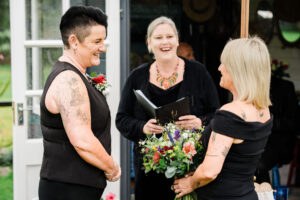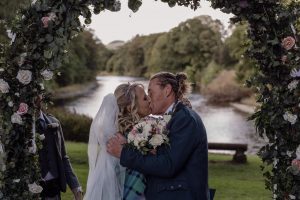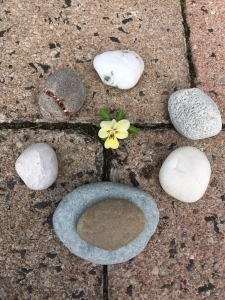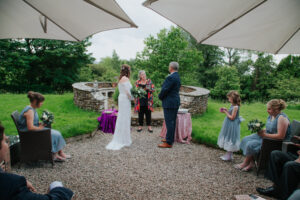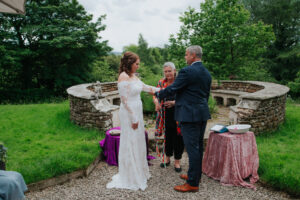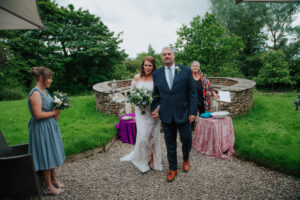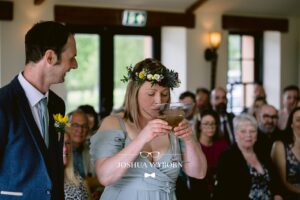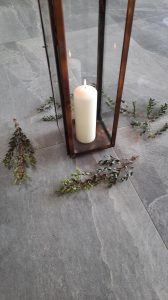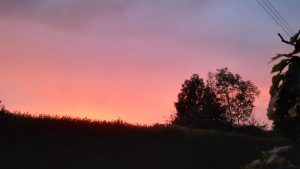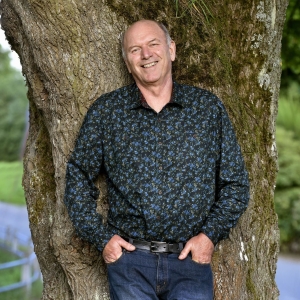In celebrant life, it’s such a joy to share photos from our ceremonies whether it’s of wedding couples, the venue, décor, cake, floristry, landscape/seascape or with other ceremonies, such as words of reflection about a moving funeral.

What isn’t talked about so much, or shared, in modern celebrancy is the role of confidentiality. All my ceremony contracts have an opt-in section for those couples who are happy for me to share photos of their ceremony. This goes way beyond any GDPR requirements, which are hopefully a given, but about respecting that not every person we work with is comfortable about being used to document our working life.
More often than not, though, there are couples who, for whatever reason, do not want any aspect/mention of their day broadcast: their names, images, venue and so on. Whether this request is because of their professional or celebrity status or because they don’t want their images on the internet, this is their right: it’s their ceremony, their identity, their life.

As a funeral celebrant, although I readily share snippets from my working life about which venue I’ve worked at or the life someone lived, names are kept out of my social media posts. I don’t share cover photos of the Order of Service, either. I also feel strongly about not sharing information about child funerals (with or without names).
In a social culture which shares ‘everything’ it can seem, for a celebrant, like their hands are tied if they can’t post about every single ceremony. Celebrancy is not a sport. We’re not in competition with each other about who has the most ceremonies, or who has the most high-profile clients, and so on. Although there are celebrants who won’t take on couples if they can’t share photos of their ceremony, I’m not one of them. Maybe it’s my age (I’m no spring chicken), or because I’ve been a celebrant since the mid 1990s long before social media ruled our lives, but I’m not motivated by bragging rights.

I absolutely LOVE it when couples generously share their wedding album with me and give me free reign to use any of the pics on my website or socials, and am grateful for this. Of course I am. It is a joy to share these.
I’ve never been the sort of celebrant who insists on taking a selfie with each couple to post on social media. If you want one with me, then of course I’ll join you. It would be my pleasure.
AND
I am also a confidential celebrant. So if you don’t want mention of your names, day, dress, décor, venue and so on shared, that’s absolutely fine, too. Many of my couples requests this.
When celebrants say “Your day your way” that should mean iron-clad confidentiality, too.
Veronika Robinson is a confidential Heart-led Celebrant in Cumbria. She has had the immense pleasure of creating beautiful weddings since 1995, and still has a skip in her step each time she heads off to officiate a ceremony. Although her practice is based in Cumbria, she officiates from Cornwall to Callanish, and everywhere in between, as well as internationally. Veronika is an inclusive celebrant and practises discrimination-free celebrancy. Her officiating style is relaxed, authentic, friendly, warm, gentle, caring, and with natural humour. She creates ceremonies across all rites of passage, whether religious, spiritual, agnostic or atheist.
Veronika and her husband Paul are co-tutors at Heart-led Celebrants Celebrant Training in Cumbria.



